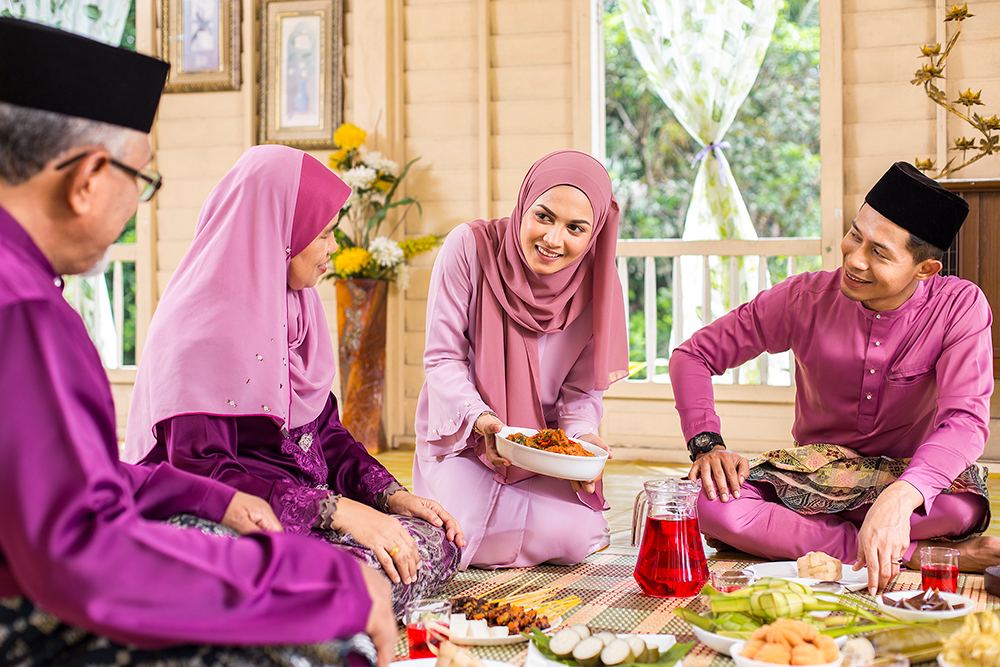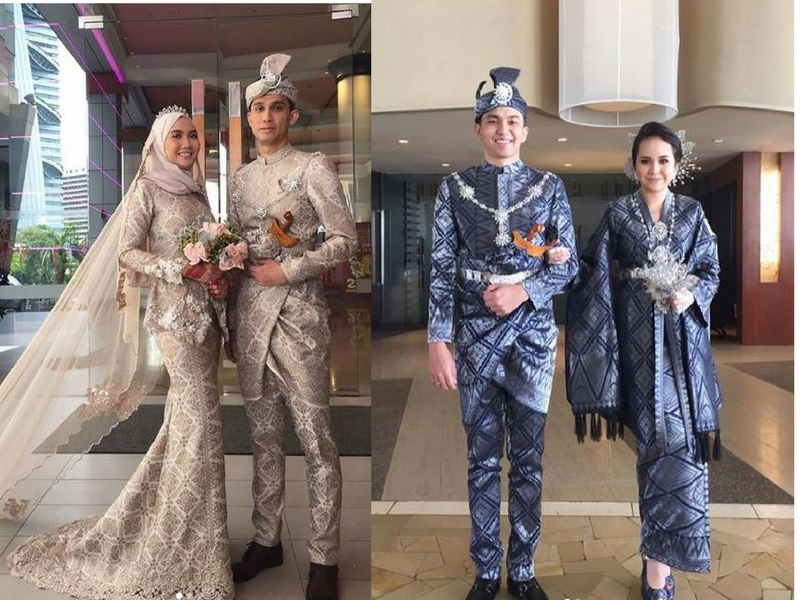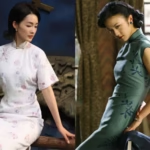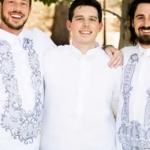Baju Kurung & Baju Kebaya are two iconic traditional attires that embody the elegance and softness of Malay culture. Both garments hold significant cultural importance, appearing not only in everyday life but also during festivals and celebrations, making them a vibrant representation of Malay heritage.
The essence of Baju Kurung & Baju Kebaya transcends mere fashion; they serve as powerful symbols of identity, tradition, and social values. Wearing these outfits is a way to honor custom while simultaneously embracing contemporary interpretations.
Historical Significance of Baju Kurung & Baju Kebaya
The exploration of Baju Kurung & Baju Kebaya begins with understanding their deep-rooted history. These garments encapsulate stories from ancient times and reflect Malaysia’s diverse cultural tapestry.
Origins of Baju Kurung

Baju Kurung traces its origins back to the 19th century, historically worn by Malay women across the region.
This outfit differs significantly depending on local customs and traditions. We can see its evolution being influenced by various factors such as colonialism and globalization. One can’t overlook how trade routes introduced varied textile patterns, contributing to the Baju Kurung‘s rich aesthetic.
The adaptability of Baju Kurung allows it to maintain relevance even today. Women love this attire for everyday wear and special occasions alike. The length and loose fit provide comfort, which resonates well within the values of modesty prevalent in Malay culture.
Evolution of Baju Kebaya

In contrast, Baju Kebaya has its roots intertwined with both Malay and Indonesian cultures. This garment dates back centuries and has evolved from a ceremonial costume to an item of contemporary fashion.
Unlike the more laid-back Baju Kurung, Baju Kebaya is often crafted from delicate fabrics, embroidered richly and adorned with intricate details that display a woman’s grace. It emerged in the early trading ports, blending influences from Chinese, Indian, and Indonesian cultures—all enriched by the cross-cultural exchanges occurring at that time.
The Baju Kebaya speaks volumes about status and femininity, initially associated with nobility and later embraced widely by all strata of society. This adaptability points to the considerable respect commanded by this outfit—a potent representation of womanhood.
Cultural Impact of Baju Kurung & Baju Kebaya
Both garments serve as a cultural identifier among Malaysians. The sheer presence of Baju Kurung & Baju Kebaya in various celebrations showcases their impact on national identity and community bonding. Today, the influence can be noticed in various expressions like music, dance, and art.
The choice for either of these outfits during festive seasons or personal milestones reflects one’s appreciation for cultural ties and the desire to express collective identity. Families often dress accordingly during rites of passage, symbolizing continuity amidst change.
These attires evoke nostalgia; wearing them rekindles memory associations tied to family gatherings and traditional events. In essence, Baju Kurung & Baju Kebaya uphold a living heritage.
Design and Aesthetics of Baju Kurung & Baju Kebaya
The beauty of Baju Kurung & Baju Kebaya lies not just in their cultural significance but also in their varying design aesthetics.
Fabric Choices and Craftsmanship
:strip_icc():format(webp)/kly-media-production/medias/4761729/original/034689500_1709571388-387798767_331188632928566_9094668696488407376_n.jpg)
Baju Kurung commonly utilizes cotton and silk, favoring comfort without sacrificing style. Fabrics are often selected based on personal preference, season, and occasion.
The craftsmanship behind these garments is an art form in itself. Local artisans use traditional methods to ensure highest quality, often taking weeks to complete a single piece. Thereby, each garment tells a story—woven through patterns and stitches reflective of the artisan’s locality.
On the other hand, Baju Kebaya showcases luxurious fabrics such as satin or crepe, often layered over sheer materials. The artistry within this garment is visible through its elaborate needlework and the intricate designs placed prominently across the bodice.
The elegance inherent in the construction of both attires dictates their place in Malaysian culture. Surprisingly, despite modern trends leaning towards minimalism, these designs continue to attract people who appreciate quality and heritage.
Colors, Patterns, and Motifs
Both Baju Kurung & Baju Kebaya feature striking color palettes, allowing wearers to showcase their individual personalities. While Baju Kurung may present a brighter spectrum, Baju Kebaya offers a more subdued yet sophisticated approach, often featuring pastel hues adorned with floral or geometric motifs.
Colors possess deep meanings within the Malaysian context. For instance, bright colors signify joy and celebration, usually reserved for festive times, whereas softer tones symbolize peace and serenity. When coupled with intricate motifs, each outfit becomes a canvas for storytelling.
Patterns might incorporate traditional designs depicting nature, flora, and fauna, echoing the country’s richness in biodiversity. It serves as an homage to the surroundings, intertwining quotidian life with nature.
Innovations in Contemporary Fashion
With changing times, both outfits have seen innovative takes, with designers incorporating contemporary styles into the traditional framework.
Fashion shows increasingly celebrate uniqueness – whether through fabric fusion or modern cuts. This evolution steers the future of Baju Kurung & Baju Kebaya toward becoming a global statement, reaching far beyond the ethnic origin.
Many fashion-forward individuals look for ways to innovate these beloved attires using accessories, pairing them with sneakers, clutch bags, and statement necklaces—leading to new sartorial opportunities proving versatility.
As designers experiment and reinterpret traditional designs, they open pathways to dialogue between generations. Thus, the traditional values interlace seamlessly with modern fashion sensibilities.
The Role of Baju Kurung & Baju Kebaya in Celebrations and Festivals
Festivals serve as stages for wearing Baju Kurung & Baju Kebaya, showcasing pride in cultural nuances and traditional expressions.
National and Religious Celebrations

Events such as Hari Raya Aidilfitri mark the importance of both outfits. During the festivities, families adorn themselves in eye-catching Baju Kurung and exquisite Baju Kebaya, reclaiming their identities in a vibrant atmosphere.
Women enjoy dressing up in various adaptations of these costumes, reflecting light-hearted adjustment alongside reverent traditions. This visual splendor becomes vital—crucial to family photographs and in preserving lifelong memories.
Moreover, the national celebration of Malaysia Day reignites the celebration of cultural diversity, presenting a tremendous opportunity for citizens to express solidarity through common attire.
Clad in Baju Kurung & Baju Kebaya, communities come together to affirm multicultural coexistence, signaling the unity stemming from an appreciation of distinctions.
Weddings and Rites of Passage

Marriage ceremonies hold profound significance among the Malays, with Baju Kurung & Baju Kebaya forming an essential part of the bridal and guest attire.
Brides tend to pick stunning redesigned Baju Kebaya embellished with intricate beadwork and accessories symbolizing purity, love, and commitment. Likewise, grooms don outfits tailored parallel to their brides’, creating harmony within a sacred ceremony.
As families gather, garments expose the timeless spirit of unity and shared heritage. Witnessing family members clad in traditional attire preserves generational legacies, reinforcing bonds through fabric and symbolism woven through time.
Additionally, Baju Kurung & Baju Kebaya are commonly seen during graduation ceremonies—signaling achievement as the youth portray their foundation steeped in tradition.
Global Opportunities: Merging Cultures
The increasing visibility of Baju Kurung & Baju Kebaya on global platforms emerges due to a growing appreciation for cultural exchange. Fashion weeks and international events now showcase these ensembles, giving them spaces beyond their home shores.
Greater interaction fosters intrigue, inviting new interpretations and an ongoing journey of understanding when different cultures meet. Events become cross-pollinated spaces where insights are gained, and mutual respect nurtured.
People worldwide have begun to adopt elements of these outfits, enhancing diversification in their wardrobes, leading to a richer dialogue where Baju Kurung & Baju Kebaya take center stage—interpreting tradition through a contemporary lens.
Conclusion

Baju Kurung & Baju Kebaya are not merely outfits. They represent a cultural resonance that echoes throughout generations while adapting to modern lifestyles. Each embroidery, fabric, and stitch carries weight, celebrating Malay heritage beautifully.
The popularity of these attires underlines the importance of honoring traditions while allowing room for interpretation. Consequently, we witness the line between past and present gently weaving into a future where fashion remains inclusive, welcoming, and representative of a melting pot of cultures.
Through fashion exhibitions, elevated discussions, and celebrations globally, Baju Kurung & Baju Kebaya remain steadfast cornerstones of whatever context you find in today’s world—a testimony to resilience, creativity, and above all, culture.
✉️ Stay Connected — Subscribe for Weekly Updates
Discover timeless stories, practical wisdom, and beautiful culture — delivered straight to your inbox.
*We only share valuable insights — no spam, ever.






